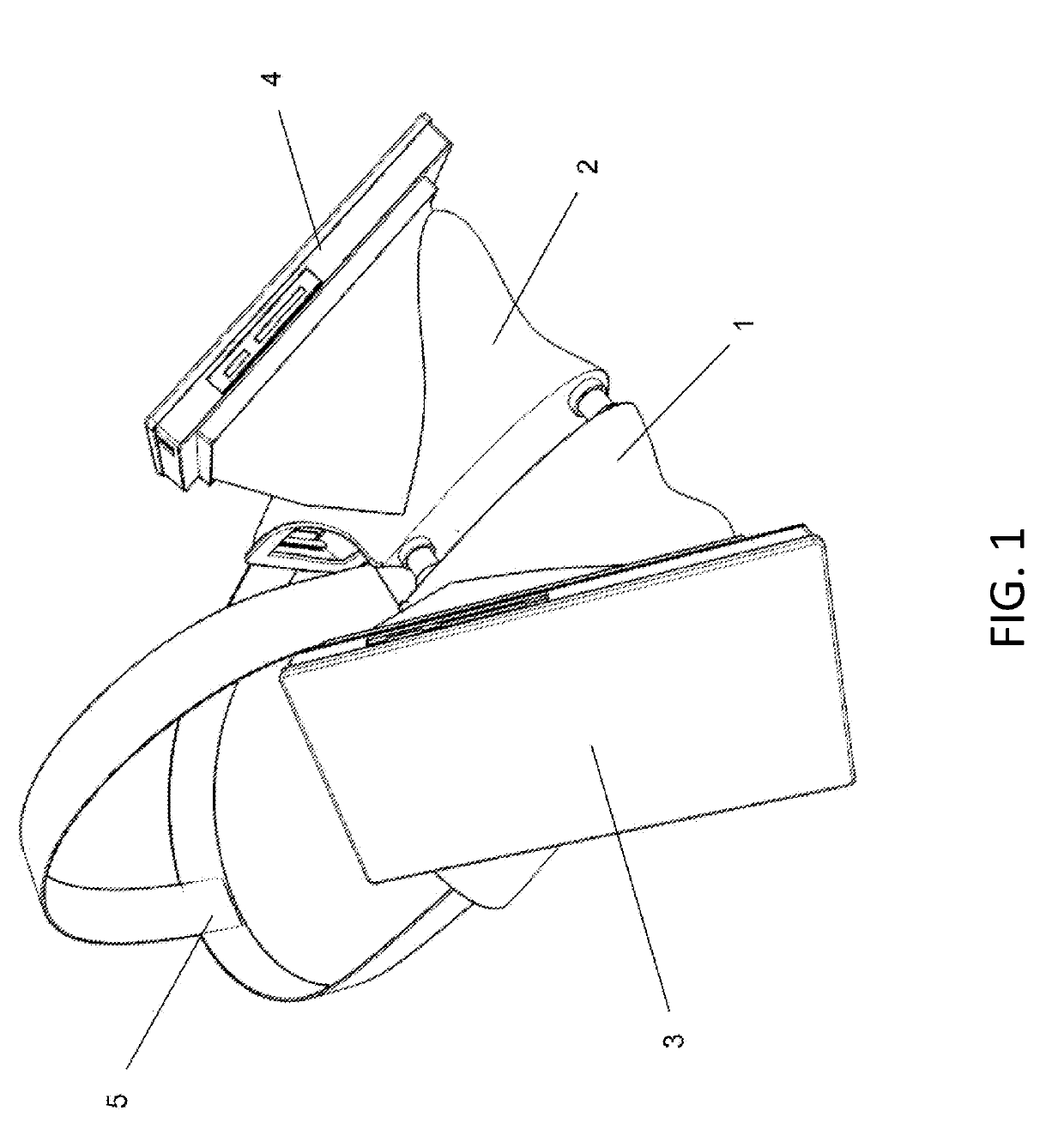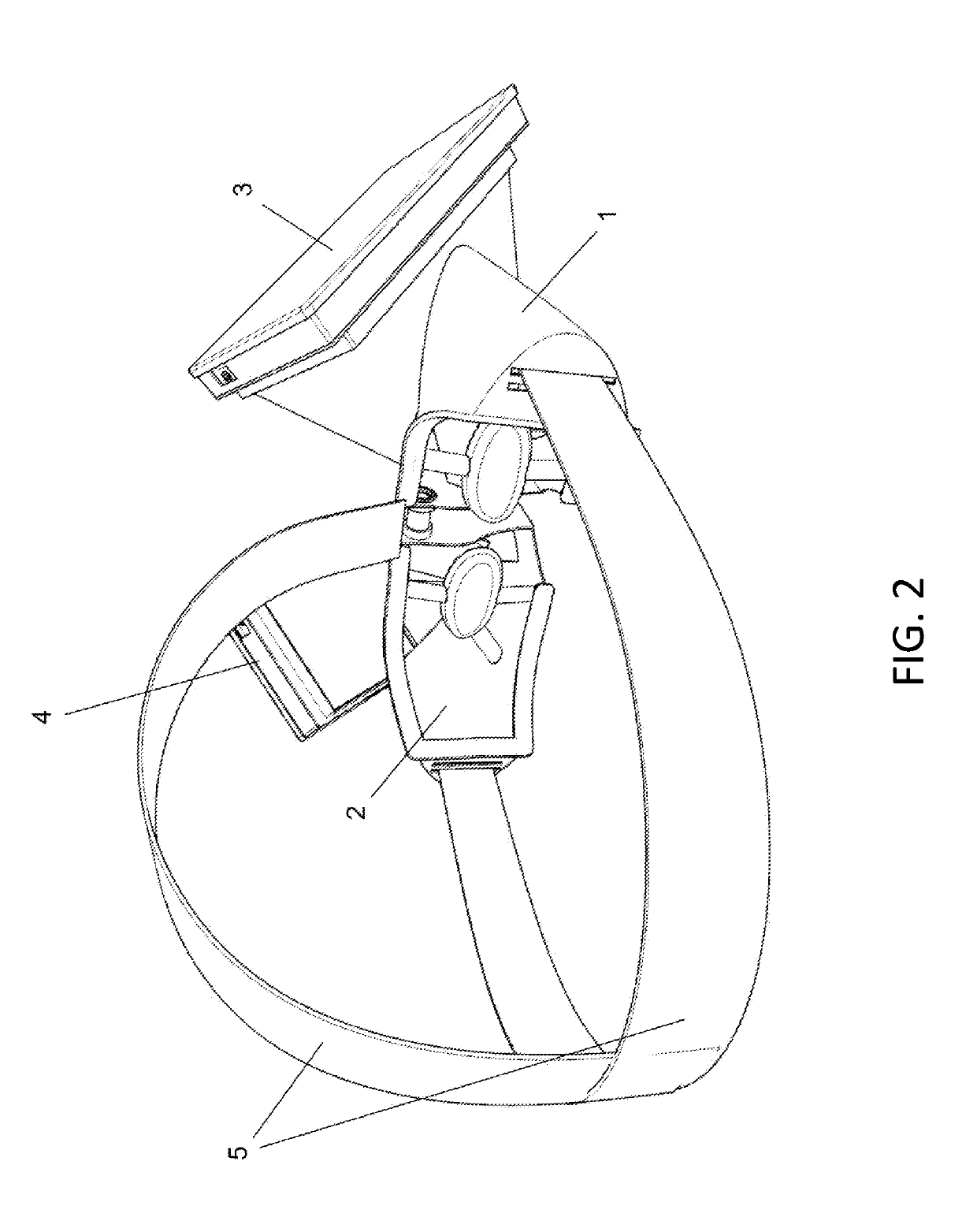Personal 3D and 2d viewing device
a viewing device and 3d technology, applied in the field of personal 3d and 2d (2 dimensional) viewing devices, can solve the problems of image resolution, size limitation of useable screens, side methods that are flawed, etc., and achieve the effect of improving digital content viewing and facilitating physical separation of two display screens
- Summary
- Abstract
- Description
- Claims
- Application Information
AI Technical Summary
Benefits of technology
Problems solved by technology
Method used
Image
Examples
Embodiment Construction
[0041]The following text describes in detail the functionality of the invention, along with descriptions of the various assemblies and parts, with reference to the associated drawings which are included for clarification of said text.
[0042]This text assumes an XYZ Cartesian coordinate system based in the normal three dimensions of space, within which the Y axis is along the forward line of sight of the user who is wearing the apparatus in question, in other words front and back of the user; the X axis runs left and right of the user; and the Z axis runs up and down from the user's perspective.
[0043]This invention is a VR (Virtual Reality) system which features a head-mounted apparatus that the user dons on his / her face using the included strap-based system, so that the user's eyes are optically interfaced with the apparatus. The strap-based system is user-adjustable, to accommodate different head sizes, and made of flexible material to provide constant tension for the sake of keepin...
PUM
 Login to View More
Login to View More Abstract
Description
Claims
Application Information
 Login to View More
Login to View More - R&D
- Intellectual Property
- Life Sciences
- Materials
- Tech Scout
- Unparalleled Data Quality
- Higher Quality Content
- 60% Fewer Hallucinations
Browse by: Latest US Patents, China's latest patents, Technical Efficacy Thesaurus, Application Domain, Technology Topic, Popular Technical Reports.
© 2025 PatSnap. All rights reserved.Legal|Privacy policy|Modern Slavery Act Transparency Statement|Sitemap|About US| Contact US: help@patsnap.com



